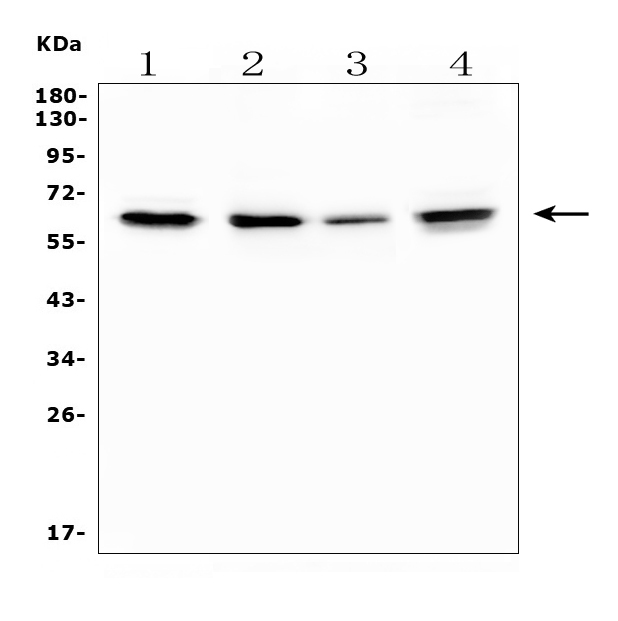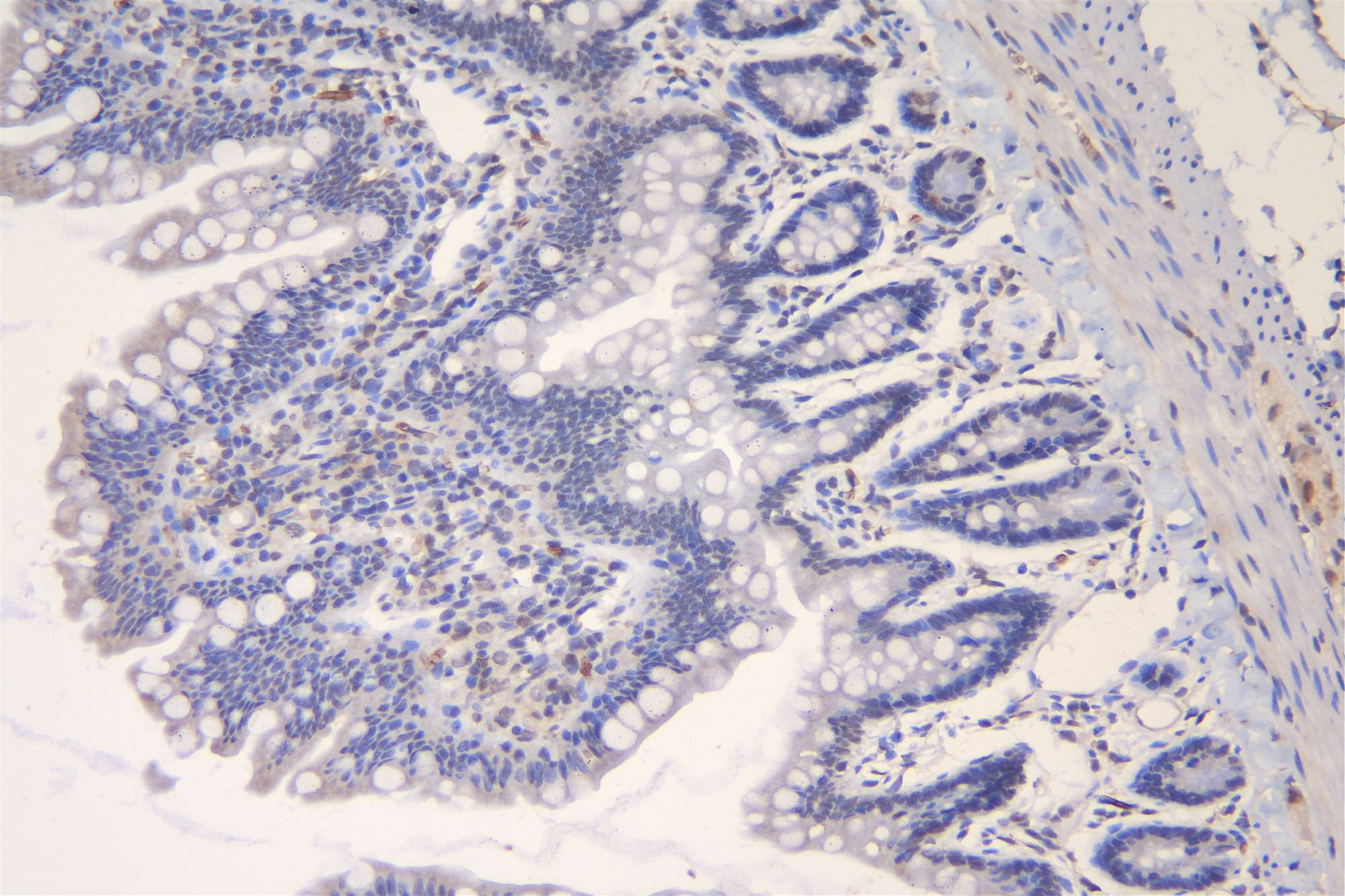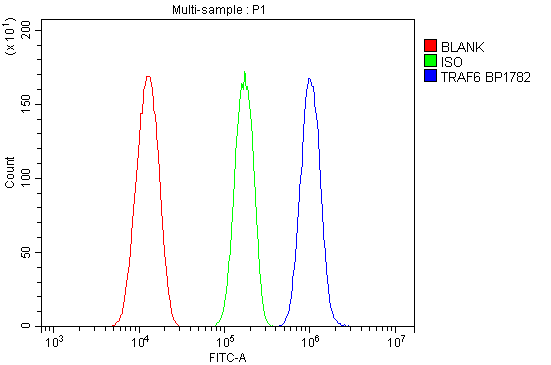| Western blot (WB): | 1:500-2000 |
| Immunohistochemistry (IHC): | 1:50-400 |
| Flow Cytometry (Fixed): | 1:50-200 |
| Enzyme linked immunosorbent assay (ELISA): | 1:100-1000 |
| (Boiling the paraffin sections in 10mM citrate buffer,pH6.0,or PH8.0 EDTA repair liquid for 20 mins is required for the staining of formalin/paraffin sections.) Optimal working dilutions must be determined by end user. | |

Figure 1. Western blot analysis of TRAF6 using anti-TRAF6 antibody (A00185).
Lane 1: rat RH35 whole cell lysates,
Lane 2: mouse thymus tissue lysates,
Lane 3: mouse spleen tissue lysates,
Lane 4: mouse RAW246.7 whole cell lysates.
anti-TRAF6 antigen affinity purified polyclonal antibody (Catalog # A00185)probed with a goat anti-rabbit IgG-HRP secondary antibody The signal is developed using an Enhanced Chemiluminescent detection (ECL) kit (Catalog # EK1002) . A specific band was detected for TRAF6 at approximately 60-65KD. The expected band size for TRAF6 is at 60KD.

Figure 2. IHC analysis of TRAF6 using anti-TRAF6 antibody (A00185).
TRAF6 was detected in paraffin-embedded section of rat intestine tissue. Biotinylated goat anti-rabbit IgG was used as secondary antibody . The tissue section was developed using Strepavidin-Biotin-Complex (SABC) (Catalog # SA1022) with DAB as the chromogen.

Figure 3. IHC analysis of TRAF6 using anti-TRAF6 antibody (A00185).
TRAF6 was detected in paraffin-embedded section of mouse intestine tissue. . Biotinylated goat anti-rabbit IgG was used as secondary antibody . The tissue section was developed using Strepavidin-Biotin-Complex (SABC) (Catalog # SA1022) with DAB as the chromogen.

Figure 4. Flow Cytometry analysis of HEPA 1-6 cells using anti-TRAF6 antibody (A00185).
Overlay histogram showing HEPA 1-6 cells stained with A00185 (Blue line).DyLight488 conjugated goat anti-rabbit IgG (BA1127, 1:100) was used as secondary antibody . Isotype control antibody (Green line) was rabbit IgG (1:100) used under the same conditions. Unlabelled sample (Red line) was also used as a control.

Figure 1. Western blot analysis of TRAF6 using anti-TRAF6 antibody (A00185).
Lane 1: rat RH35 whole cell lysates,
Lane 2: mouse thymus tissue lysates,
Lane 3: mouse spleen tissue lysates,
Lane 4: mouse RAW246.7 whole cell lysates.
anti-TRAF6 antigen affinity purified polyclonal antibody (Catalog # A00185)probed with a goat anti-rabbit IgG-HRP secondary antibody The signal is developed using an Enhanced Chemiluminescent detection (ECL) kit (Catalog # EK1002) . A specific band was detected for TRAF6 at approximately 60-65KD. The expected band size for TRAF6 is at 60KD.

Figure 2. IHC analysis of TRAF6 using anti-TRAF6 antibody (A00185).
TRAF6 was detected in paraffin-embedded section of rat intestine tissue. Biotinylated goat anti-rabbit IgG was used as secondary antibody . The tissue section was developed using Strepavidin-Biotin-Complex (SABC) (Catalog # SA1022) with DAB as the chromogen.

Figure 3. IHC analysis of TRAF6 using anti-TRAF6 antibody (A00185).
TRAF6 was detected in paraffin-embedded section of mouse intestine tissue. . Biotinylated goat anti-rabbit IgG was used as secondary antibody . The tissue section was developed using Strepavidin-Biotin-Complex (SABC) (Catalog # SA1022) with DAB as the chromogen.

Figure 4. Flow Cytometry analysis of HEPA 1-6 cells using anti-TRAF6 antibody (A00185).
Overlay histogram showing HEPA 1-6 cells stained with A00185 (Blue line).DyLight488 conjugated goat anti-rabbit IgG (BA1127, 1:100) was used as secondary antibody . Isotype control antibody (Green line) was rabbit IgG (1:100) used under the same conditions. Unlabelled sample (Red line) was also used as a control.





